Internet usage has increased significantly in the last decade, which has exposed users to various malicious applications ready to invade users’ privacy. Consequently, personal data leaks (such as photos) and other hacking attacks have also increased. An effective way for hackers to access users’ devices and infiltrate them is through a keylogger virus.
Precisely, keyloggers are lightweight, difficult to detect, spyware applications that take note of every key you type on your PC or mobile device. These tools then relay the logged data to the hacker’s server.
These malicious applications can run on your system for many years undetected, without giving a hint of who deployed them on your device and how.
To help you recognize the malicious extent of keyloggers, here is a real-world case.
A man named Joe Lopez filed a suit against Bank of America in 2005 after a hacker infiltrated the bank database and stole $90,000. Investigations revealed that the hacker transferred the money to another account in Latvia.
Wondering how did it happen? Joe Lopez PC fell victim to a malicious application named Backdoor Coreflood that was actually a keylogging tool. It recorded every keystroke Lopez made. Hence, the criminal accessed everything he typed on his PC and used it to steal money from his account.
This incident occurred in 2005, more than 15 years ago. So imagine how sophisticated malicious programs might have become since then.
Mr. Lopez lost the lawsuit because the court determined that he did not take adequate precautions to secure his system.
That judgment clears one crucial thing; if you don’t remain cautious, even the court won’t help. And to take adequate precautions against a nasty threat like a keylogger, you first need to understand it well.
What is a keylogger, and how does it work?
Keylogger comes from the family of the Trojan virus. A Trojan would typically mask itself like a useful application to sneakily conduct its malicious activities after download.
The term ‘keylogger’ describes any program that records the keystrokes of a device. It carries out its operation by secretly monitoring and storing the keystrokes of a user.
However, there are also keylogging devices that are different from keylogging software. So that brings us to the question of what is a keylogger virus?
Not every keylogger is malicious or a virus. In some cases, legitimate programs also carry out keylogging functions. For example, applications that use “Hotkeys” or help users toggle between different keyboard layouts may not be malicious.
Some organizations also install keylogging software on employee systems to track their activities during working hours. If this is a known policy of an organization, then it is justified and legitimate. Besides, parental control apps may also keylog the devices of the wards.
But, many malicious keylogging applications also exist that are actually viruses and help cyber criminals in espionage and unjustified monitoring.
Thus, no matter the reason for deploying, you should know that such tools can facilitate malicious and criminal intent.
How a keylogger works
Once installed on a device, keylogging tools execute immediately after the target user boots the system and runs until shutdown.
Some keyloggers target your activities on specific applications/websites, while others target every keystroke you make irrespective of what you do.
Most modern keyloggers are lightweight. Hence, they don’t affect the target device’s performance, becoming hard for users to suspect anything wrong and take action. Also, these tools remain hidden in your device operating system, which means you cannot usually find them in your list of installed programs.
Sometimes they can embed themselves in hidden browser extensions. Some criminals would poison their website and infects any device that visits the sites. Keyloggers help malicious actors steal your personal details and credit card information alongside other secret data.
A keylogging software usually stores your keystrokes on a cloud server or in a small file, which then either gets emailed to the person monitoring your moves automatically or accessed by him via an online dashboard.
Today, not only do software-based keyloggers exist, but many hardware keylogging devices are also available in the market.
Hardware keylogger
Some keyloggers are embedded in hardware, and you may never suspect them. For example, a mobile manufacturing firm can spy on your cellphone by embedding a keylogger in jacks. The same applies to computers and laptops.
Hardware keyloggers can be embedded in mouse, joystick and can also serve as a keyboard overlay.
Did you know that each key’s sound can help hackers determine the keys which a user types through an acoustic keylogger? The keyboard overlay records every sound of your keystrokes and associates it with specific keys.
But most cybercriminals and international spying bodies use software keyloggers instead of hardware or acoustic ones, as they are easy to deploy.
How does a keylogger get on your PC?

Typically, keyloggers get into your system when you visit poisoned websites.
That happens by exploiting a vulnerability in your browser where hackers install keystroke loggers through a webpage script. Then, when you visit a malicious website, it launches.
Another way a keylogger gets into your PC or other device is when someone else deliberately installs it on your machine after gaining physical or virtual access to it.
A keylogger is secretly embedded in your operating system and can perform all its tasks without getting noticed. It can exploit an infected machine and can sometimes download and install other malware onto the infected system.
You should install a reputable anti-malware application and regularly update your system to prevent this attack. Also, be careful when downloading files from the internet. Visit reputable sites only because many websites potentially carry keylogging software.
Unfortunately, despite the frequent use of keyloggers by cybercriminals, most antivirus programs overlook it. Therefore, it is essential to opt for a reputable antivirus program with a broad definition of keyloggers in its database. (More on how to protect against them a little later in this article.)
Do mobile devices get keyloggers?
Yes, mobile devices are prone to keylogging software, too. Although, currently, no known hardware keylogger for smartphones exists. However, every mobile device, including iPhones and Androids, is vulnerable to software-based keylogging tools widely available.
A mobile keylogger can capture whatever a user types on the screen irrespective of the device type. It even records virtual inputs on the screen and tracks all your activities.
You should know that mobile keylogging software would typically record more than your keyboard entries. It takes account of your emails, screenshots, images, text, log-in details, and so much more.
Once installed, these malicious programs even connect to your phone’s microphone to record your calls, connect to your camera, network traffic, mobile printers, etc.
But the most dangerous part of smartphone keylogging software is its restriction algorithm that bars you from accessing some websites such as security sites and antivirus application download portals, obviously, to prevent you from tracing it.
Keylogger construction

The primary idea behind keylogging applications is to get in-between a chain of events that happen while typing to log user input. In simple words, it works between the two phases; when a key is pressed and when it appears on the screen.
Technically, keylogging software would typically intercept DDL functions in the user mode and request information from the user’s keyboard through the SDM (Standard Documented Method).
There are several ways to achieve this, but the typical form is through software and/or hardware bug. This is what defines whether a keylogging tool is a software or hardware-based.
Physical keylogging devices are typically small and can be attached to the keyboard or other peripheral devices. Whereas software keyloggers record users’ keystrokes and relay them back to the developers through the internet.
Other methods include secret surveillance through other hardware such as network devices, mice, joysticks, etc.
How keyloggers spread
Keyloggers are malicious applications, so they spread the same way as other malicious programs spread on your computer. Typically, they can reach your device,
- upon opening a malicious attachment from an email or other sources.
- via P2P networks, especially when you launch a file from an open-access directory.
- through a web page script that automatically runs on your system when you visit a malicious URL.
- via other malicious applications.
- by an adversary with physical access to your unsecured device in your absence.
How to detect and remove a keylogger
Detecting a keylogger is the first step to ensuring your security. The most effective and easiest way is to scan through the running processes of your system’s Task Manager.
However, a keylogger would usually name its process to an unrelated name, hence becoming difficult to identify. Therefore, you should search the names of any new or strangely-named processes running on your system on the internet to spot any malicious processes.
If you find any keylogging or tracking process, disable or stop it from running on your device. Here you go with detailed steps to do so.
- Access your Windows Task Manager. (You can do that either by simultaneously pressing “Ctrl“, “Alt“, and “Delete” keys and then clicking on “Task Manager” or, right-click on your taskbar and click on “Task Manager” from the menu to see.
- Once opened, click on the “Processes” tab to view all running processes on your PC.
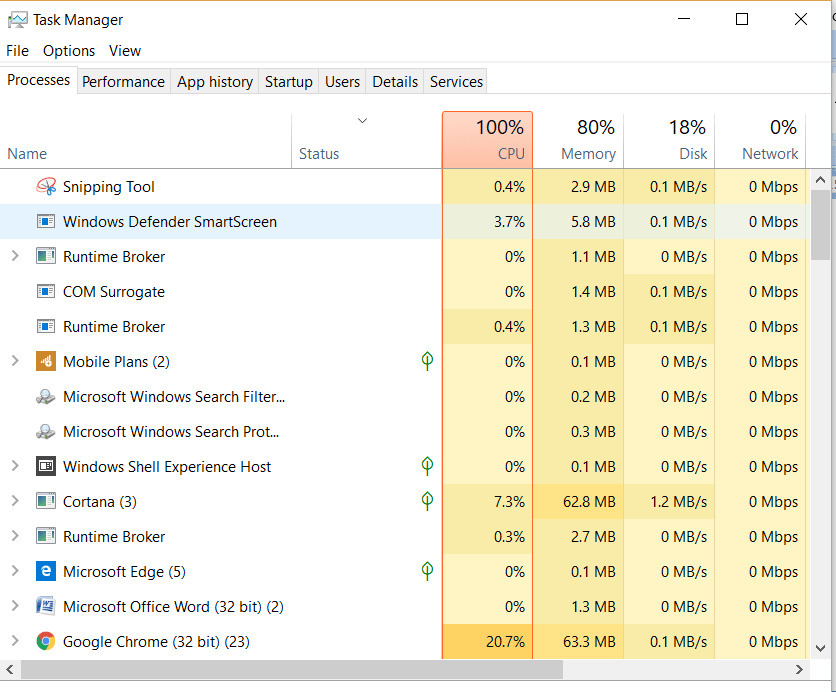
- Check for the names of unusual processes and stop any that you find related to a key logger.
You should also click on the “Startup‘ tab to know the applications and processes that launch automatically when your system starts. This will enable you to determine if a keylogger is running on your system or not since they are usually programmed to run immediately after the system starts.
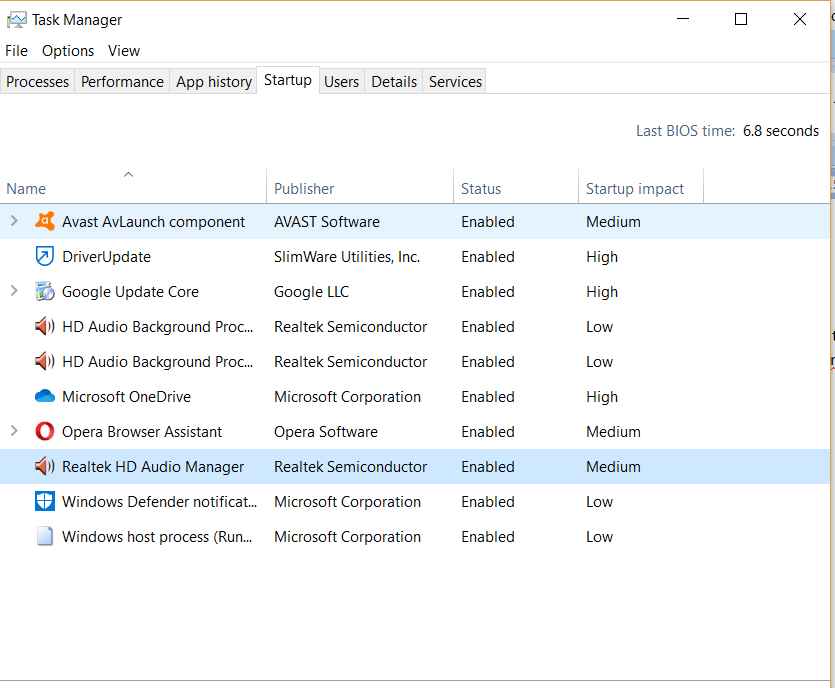
- Right-click on the name of any program you suspect as a keylogger and disable it.
Checking for keylogger through internet usage
Checking your internet usage report also is an effective way of confirming a keylogger’s presence on your system. Follow the steps below.
- Go to the “Settings” menu (press the “Windows” and “I” keys simultaneously to directly open the Settings window, or scroll through the Startup menu to find “Settings“).
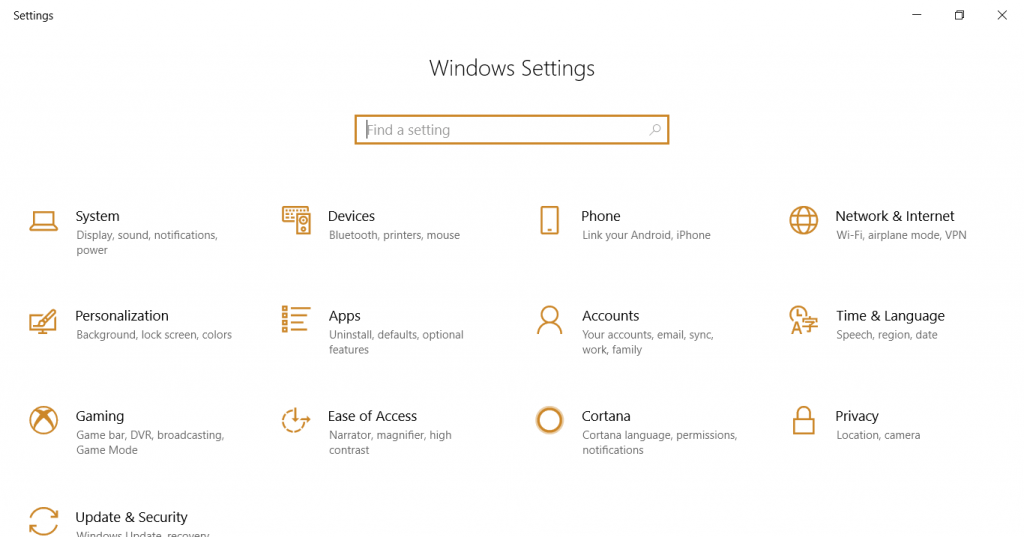
- Click on the “Network & Internet” option.
- Now select “Data usage” tab.
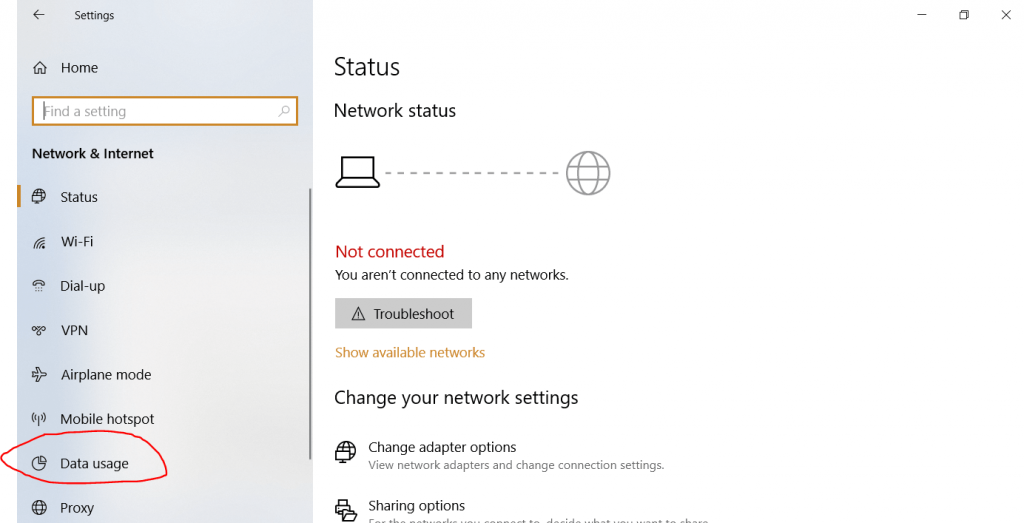
- Click on “View usage details” option.
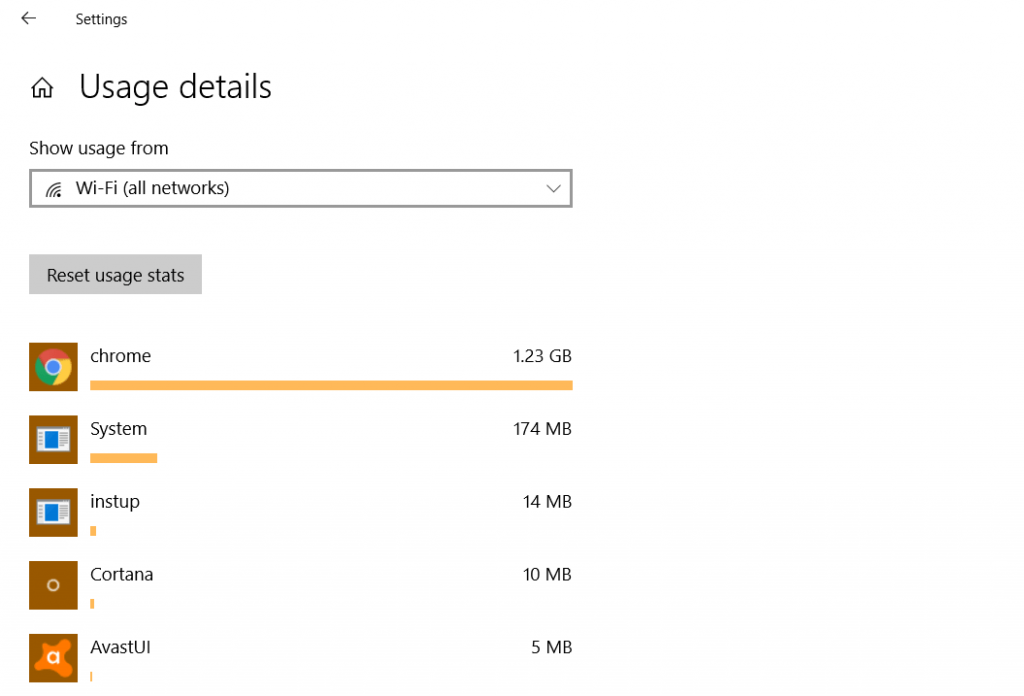
You can now see a list of all applications using your internet resources. Next, search for any unknown program on the internet to determine if it is associated with a trojan.
Looking out for keyloggers in browser extensions
You should also search your browser plug-ins and extensions to determine if any of them relates to a keylogging tool. To do that, you need to get to your browser’s extension list.
Here is how to find the extensions running on major browsers:
- Firefox: Open your Firefox web browser and type about:add-ons in the address bar.
- Google Chrome: Open your Chrome and type chrome://extensions into the address bar.
- Safari: Go to the Safari menu option and select “Preferences“, then select “Manage extensions” option.
- Opera: Locate the menu tab and select “Extensions“. Then click on “Manage extensions” option there.
- Microsoft Edge: Go to the browser menu and click on “Extensions” to find all add-ons.
- Internet Explorer: Go to the “Tools” menu and click on “Manage add-ons” setting.
Now scan through the list of all extensions and search the internet for extensions with an unusual name. If you find any malicious add-on, disable or remove it immediately.
Detecting and removing keylogger through full system malware scan
System-wide malware scans help you detect the presence of a keylogger on your system and remove it. You should carry out a full malware scan or schedule automatic scans to remain safe from any malicious or intrusive applications.
But, make sure you use a top-notch anti-malware software equipped to sniff out any keylogger.
A reputable anti-malware uses signature recognition and heuristics to recognize malware. It can also detect the typical tracking activities, such as capturing screenshots and recording keystrokes to spot any spyware tools and then remove them.
Fortunately, you do not need to spend a fortune to get your hands on such programs. There are many free malware and spyware removal tools available that can get the job done for you.
9 ways to keep yourself protected from keyloggers

A keylogger is a significant threat to your personal information, such as your emails, passwords, user names, bank card information, and other sensitive details. Losing this data to adversaries can lead to identity theft, unauthorized transactions, and more.
Therefore, make it a priority to keep your devices safe from such data stealers. Use the following methods to prevent keylogging on your PC.
1. Use 2-step verification
Generally, hackers use your username and password stolen through keylogging to log into your accounts and carry out malicious activities.
Therefore, you should secure your online accounts with two-step security verification, also known as “multi-factor authentification.”
With two-factor authentication, you receive a PIN on your mobile device for authentication before you could access the account.
This additional verification step prevents hackers from gaining access to your accounts even if they succeed in stealing your log-in details. The process also notifies you if someone tries to access your account.
We recommend you set up two-step verification for your email, bank log-in, social media accounts, and pretty much every account online that you deem important.
2. System and application updates
System updates are necessary because they automatically eliminate all the malicious third-party applications from the operating system, including keyloggers.
Furthermore, a software update also automatically fixes all the existing issues on your device, including security vulnerabilities that may allow hackers to gain access.
Please note that some system updates do not update your web browser. Therefore you should always update your browsers too, because, like OS, outdated browser add-ons can also lead to hacking and malware attacks.
3. Use encryption software
An encryption application masks your keystrokes, hence sending the wrong key logs to the hacker. Since encryption scrambles your input, the keylogger won’t track the exact keys you typed. This is an added security layer you can apply on your PC for enhanced security.
Axcrypt.net is one encryption software that you can use for free on your Mac and PC.
4. Avoid downloading cracked programs
People often look for cheap software alternatives on the internet. However, these apparently free apps can cost your security. That’s because the hackers often exploit your interest by inserting malicious codes within cracked software to infect your system.
Hence, it is always better to purchase or download genuine applications from authorized reputable sites.
5. Install an anti-malware program
All the quality anti-malware programs protect against various threats such as Trojan, rootkit, keylogger, and other spyware applications. Furthermore, they also periodically scan your PC and fix hardware problems, software issues and optimize your system. Hence, ensure you install it right after buying and setting up a new PC.
Also, make sure that the anti-malware program’s virus database definition is updated regularly. An out-of-date anti-malware system may not adequately protect your PC against newer threats.
Many quality anti-malware apps exist in the market today, offering multi-platform compatibility. Hence, you can download any of those robust apps on your device without spending money. One such resilient anti-malware available for free is Malwarebytes Anti-Malware, which runs deep scans alongside daily updates.
6. Start using a VPN
A Virtual Private Network (VPN) provides integrated protection against various cyber threats by anonymizing your online existence. It encrypts your internet traffic, thereby preventing any snoopers from sniffing your online data. In this way, it also potentially hinders hackers from accessing your keystrokes.
VPN technology is also helpful in the corporate environment, given that organizations are the primary target of cybercriminals.
Nonetheless, ensure you always opt for the best VPN only because most VPN services (especially the free ones) lack credibility. Unfortunately, some services would even log your information and use it for monetizing and other malicious purposes.
7. Exercise caution when opening an attachment
People often go online to download free files and attachments. However, most of the attachments and files you download have malicious applications. Especially those you download through shared networks and drives.
Therefore, you should exercise caution when downloading files on the internet. Ensure you visit only reputable sites to download genuine software.
Besides, be wary of unsolicited, promotional, marketing, spam emails, or emails from unrecognized senders. Such emails may carry phishing links and malicious attachments.
Furthermore, be skeptical about the attachments you receive from your friends and colleagues. Some of them might be poisoned and can install a keylogger on your system.
8. Be watchful for your passwords
You should periodically change your passwords and aim to use strong passwords only. This is because hackers would usually trail you for some time before carrying out malicious activities. Therefore, changing passwords frequently may confuse them.
Also, do not use the same passwords and usernames for all your accounts.
To make your job easy and keep your passwords secured, consider using the best password manager that offers password encryption.
9. Use of an alternate and virtual keyboard
Try to use a virtual keyboard when logging in to your online accounts. Since keyloggers can’t often detect virtual keyboards, it is handy in protecting your privacy. Not only a virtual keyboard like DVORAK will help protect your keystrokes, but it will also prove beneficial in other ways.
Periodically changing your keyboard layout will prevent acoustic keyloggers from determining the characters through the keypress sounds. These tracking tools use each key’s tone to define your input, and changing your keyboard layout assigns different tones to your keys.
Bonus tip
Finally, you can also use a comprehensive security solution. Protect all your digital devices – smartphones, tablets, PCs, Macs, and any other device used to access the internet. A solution like McAfee can give you all-around system protection such as firewall protection, antivirus system, data protection, and identity manager.
Increased use of keylogger by cybercriminals

Keylogging software has existed for a long time. Yet, over the last few years, criminals have increasingly used such tools. In fact, the recurrent cybersecurity incidents, both on a small and large scale worldwide, also hint the same.
A research carried out by Verisign suggests a tremendous rise in the use of malicious programs with advanced keylogging functionalities. Another study by Symantec indicates that almost 50% of the world’s malicious programs aim at harvesting internet users’ personal data.
Also, a study conducted by Bambenek suggests that keylogging applications infect more than 10 million systems in the USA alone. The possible annual losses stand at an estimated $24.3 million each year.
Did you know that the Kaspersky antivirus database currently has definitions of more than 300 types of keyloggers? These numbers do not include those embedded with other forms of malicious applications such as spyware. That is the colossal extent of keylogging software, and users must take the necessary steps to protect their privacy.
Some devastating real-world keylogging attacks
- In August 2006, hackers stole over $1 million from Scandinavian Bank (Nordea) clients. The imposters sent fake automated emails to bank clients asking them to install the anti-spam application in the attachments. However, the app had a lethal keylogging Trojan ‘Haxdoor’ that recorded users’ input upon accessing Nordea’s online service. That helped cybercriminals access the users’ information and steal money from various accounts.
- In 2004, the most significant cyber epidemic occurred when MyDoom virus conducted DoS attack on www.sco.com, rendering it unstable for several months. The worm also attacked anyone who visited www.sco.com with its keylogging functions to harvest credit card numbers and log-in details to steal money.
- In early 2005, the UK police prevented cybercriminals from stealing banking data via keylogging. The attackers planned to steal a whopping $423 million, for which, the keylogging Trojan created by then 32-year old Yeron Bolondi tracked users’ keystrokes for their banking sessions.
- In May 2005, the London police arrested an Israeli couple and charged them for developing malicious keylogging applications used by individuals and organizations to carry out massive espionage. Some of the companies involved in this crime included Israeli cellular services Cellcom and Pelephone, and the satellite TV provider YES.
- During the first quarter of 2006, Brazilian Police carried out a raid and arrested 55 people for spreading malicious keylogging applications. The tools were embedded in users’ browsers and activated upon opening a bank’s URL. These miscreants used the stolen data to steal $4.7 million from 200 clients.
- In 2004, a group of young Russian and Ukrainian attackers conducted a massive keylogging attack via malicious emails targeting bank clients in France and other countries. They harvested users’ bank account credentials and used that for money transfers, stealing as much as $1 million within 12 months.
Final notes
By now, you must have understood what a keylogger is all about, the dangers it poses, and how to prevent it. Given that you are ready to take proper cautions and needed actions, you should be able to keep keyloggers at bay for good.
Keylogging developers usually mask their applications behind other legitimate apps, and it infects your system after you download/install on your device. They can use it to steal sensitive information from you for hacking, financial loss, identity theft, and more. Sometimes it is also used for industrial and political espionage.
Due to stealth activity, keylogging has become one of the most commonly used tools in cyber fraud worldwide.
Remember, gaining maximum security in this digital age is more like completing a puzzle with different pieces. And the recommended tools are pieces you need to stay protected at the maximum possible level.
Therefore, you should at least use a quality antivirus application and VPN (read about the pros and cons of VPNs if you are still wondering whether you should use such a tool) to protect your device.
Besides using technological tools to protect your system, also ensure the following best practices:
- Use a strong password.
- Regularly change your password.
- Be careful about the websites you visit and the files you download
- Always lock your devices with passcodes.
- Use alternate keyboards and virtual keyboards whenever you want to log into your banking applications and emails.
- Always update your system and applications.
Stay aware, stay safe!






